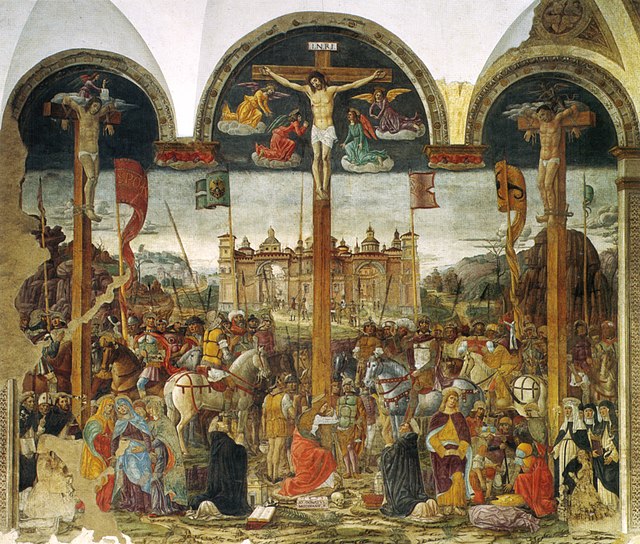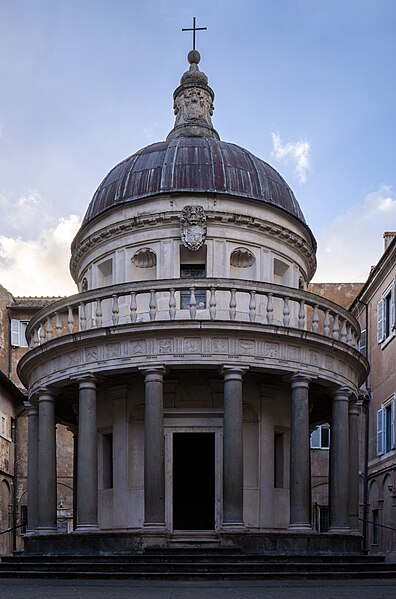The Last Supper (Leonardo)
The Last Supper is a mural painting by the Italian High Renaissance artist Leonardo da Vinci, dated to c. 1495–1498, housed in the refectory of the Convent of Santa Maria delle Grazie in Milan, Italy. The painting represents the scene of the Last Supper of Jesus with the Twelve Apostles, as it is told in the Gospel of John – specifically the moment after Jesus announces that one of his apostles will betray him. Its handling of space, mastery of perspective, treatment of motion and complex display of human emotion has made it one of the Western world's most recognizable paintings and among Leonardo's most celebrated works. Some commentators consider it pivotal in inaugurating the transition into what is now termed the High Renaissance.
The Last Supper (Leonardo)
Crucifixion by Giovanni Donato da Montorfano, 1495, opposite Leonardo's Last Supper
The painting as it appears on the refectory wall
The refectory
In art history, the High Renaissance was a short period of the most exceptional artistic production in the Italian states, particularly Rome, capital of the Papal States, and in Florence, during the Italian Renaissance. Most art historians state that the High Renaissance started between 1490 and 1500, and ended in 1520 with the death of Raphael, although some say the High Renaissance ended about 1525, or in 1527 with the Sack of Rome by the mutinous army of Charles V, Holy Roman Emperor, or about 1530. The best-known exponents of painting, sculpture and architecture of the High Renaissance include Leonardo da Vinci, Michelangelo, Raphael, and Bramante. In the 21st century, the use of the term has been frequently criticized by some academic art historians for oversimplifying artistic developments, ignoring historical context, and focusing only on a few iconic works.
Raphael's frescos in the Raphael Rooms of the Apostolic Palace in the Vatican, also commissioned by Pope Julius II
The Last Supper, mural painting by Leonardo da Vinci
Bramante'sTempietto, designed 1502, San Pietro in Montorio, Rome
Leonardo da Vinci's Mona Lisa or La Gioconda (1503–05/07) in the Louvre








